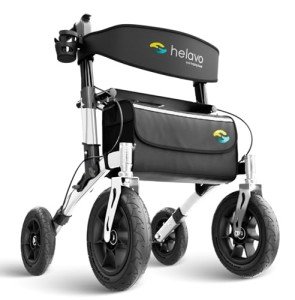Understanding Mobility Assistance: A Comprehensive Guide
In an increasingly active world, mobility assistance has ended up being essential for many people. Whether due to age, injury, or persistent health problem, mobility difficulties can significantly affect every day life. This post explores the numerous forms of mobility assistance, their advantages, and practical considerations for those looking for aid.
What is Mobility Assistance?
Mobility assistance includes a series of services, gadgets, and adjustments developed to help people move safely and efficiently. It intends to boost independence for those with problems in motion, allowing them to perform everyday activities and engage with their environments.
Kinds Of Mobility Assistance Devices
Mobility assistance devices can vary commonly, from simple to complicated aids. The following table describes some common kinds of mobility assistance devices, their descriptions, and appropriate uses:
| Type of Device | Description | Ideal For |
|---|---|---|
| Wheelchairs | Wheeled mobility gadgets for individuals with restricted walking capability. | Long-term or short-lived mobility requirements. |
| Walkers | Frames with four legs, supplying support while walking. | People requiring a stable aid. |
| Canes | Lightweight sticks using support; consists of standard and quad walking sticks. | Those with mild mobility problems. |
| Crutches | Gadgets developed to transfer weight off the legs. | Post-surgery healing or injuries. |
| Mobility Scooters | Motorized cars offering transport over short distances. | Those with mobility impairments. |
| Stairlifts | Motorized chairs that move up and down stairs. | Multilevel homes with stair accessibility issues. |
| Home Modifications | Structural modifications, such as ramps or larger doorways. | Enhancing home ease of access for wheelchairs or walkers. |
| Transfer Aids | Devices like sliding boards or lift systems for simpler transfers. | Assistance in transferring to and from chairs or beds. |
Benefits of Mobility Assistance
The value of mobility assistance extends beyond physical motion. Here are numerous key advantages:
- Enhanced Independence: Mobility devices empower users to perform everyday tasks separately, promoting self-sufficiency.
- Enhanced Quality of Life: By allowing greater participation in social activities, mobility assistance contributes to emotional wellness and social combination.
- Security and Support: Devices like walkers and canes offer physical support, minimizing the risk of falls and injuries.
- Access to Healthcare: Mobility assistance can simplify transport to medical visits, guaranteeing users get necessary care.
- Modification Options: Many mobility gadgets can be tailored to fit individual needs and choices, guaranteeing convenience and performance.
Common Mobility Assistance Challenges
While mobility assistance can pave the method for greater self-reliance and improved quality of life, different difficulties may emerge. A few of the common issues consist of:
- Cost: Mobility gadgets can be expensive, and insurance coverage might differ considerably.
- Training and Familiarization: Learning to utilize brand-new devices correctly might need time and assistance.
- Availability Issues: Not all environments are equipped to accommodate mobility devices, causing potential barriers.
- Preconception: Social preconception around the usage of mobility aids can impact self-confidence for some individuals.
Providing and Receiving Mobility Assistance
To ensure the most efficient assistance, it is necessary for both suppliers and receivers of mobility aid to consider numerous elements:
- Assessment of Needs: An extensive evaluation by a healthcare expert can determine the specific type of assistance needed.
- Trial Period: Trying out devices can assist people find the one most matched to their way of life and preferences.
- Regular Maintenance: Maintenance of mobility gadgets guarantees sturdiness and safety.
- Education: Providing training on the appropriate use of mobility aids is essential for maximizing benefits.
Mobility Assistance FAQs
Q1: What types of mobility aids are readily available?A: Common mobility aids include wheelchairs, walkers, canes, crutches, and scooters, to name a few. Reliable Rollator Walker is created to satisfy specific requirements and choices.
Q2: Where can I get mobility assistance devices?A: Mobility devices can be gotten from medical supply stores, online merchants, or through doctor recommendations.
Q3: Will my insurance cover mobility assistance gadgets?A: Many insurance plans offer partial protection for mobility help, however protection can vary based upon the policy. It's suggested to consult the insurer for specific details.
Q4: How can I adjust my home for mobility assistance?A: Home modifications like ramp installation, larger doorframes, and get bars in restrooms can greatly enhance ease of access. Consulting with a physical therapist can offer customized services.
Q5: How do I choose the right mobility aid for me or an enjoyed one?A: Assess the individual's mobility needs, weight capability, and way of life. Attempting out different devices can likewise assist in picking the one that feels most comfortable and practical.
Mobility assistance plays a crucial role in boosting the self-reliance, safety, and lifestyle for people facing mobility challenges. From basic canes to complex mobility scooters and home modifications, a range of alternatives exist to satisfy distinct needs. As society continues to recognize the significance of availability, the combination of mobility assistance services into every day life will enhance, ensuring that everybody has the opportunity to lead a fulfilling and active lifestyle.
By understanding the available choices and advantages, individuals and their households can make informed choices that support their mobility requires.

